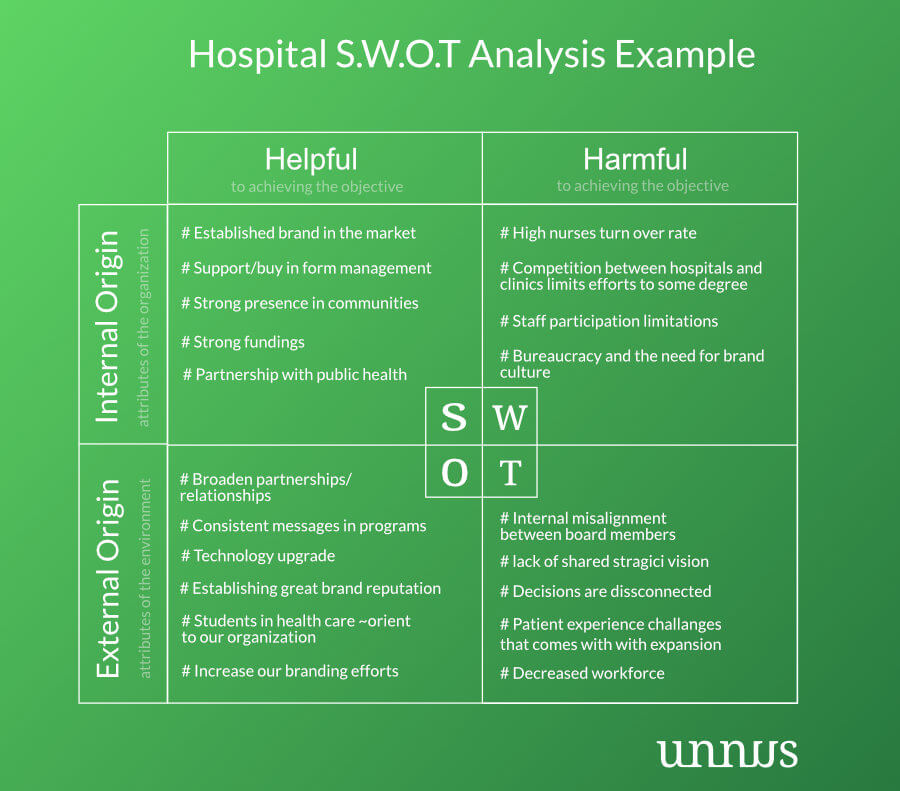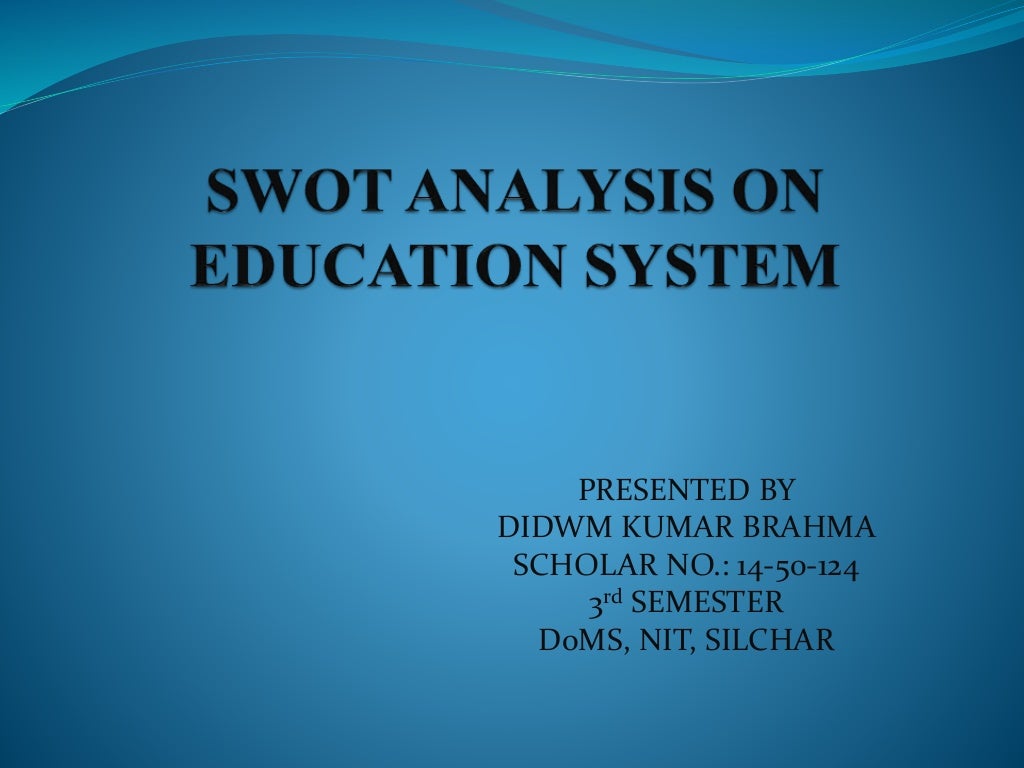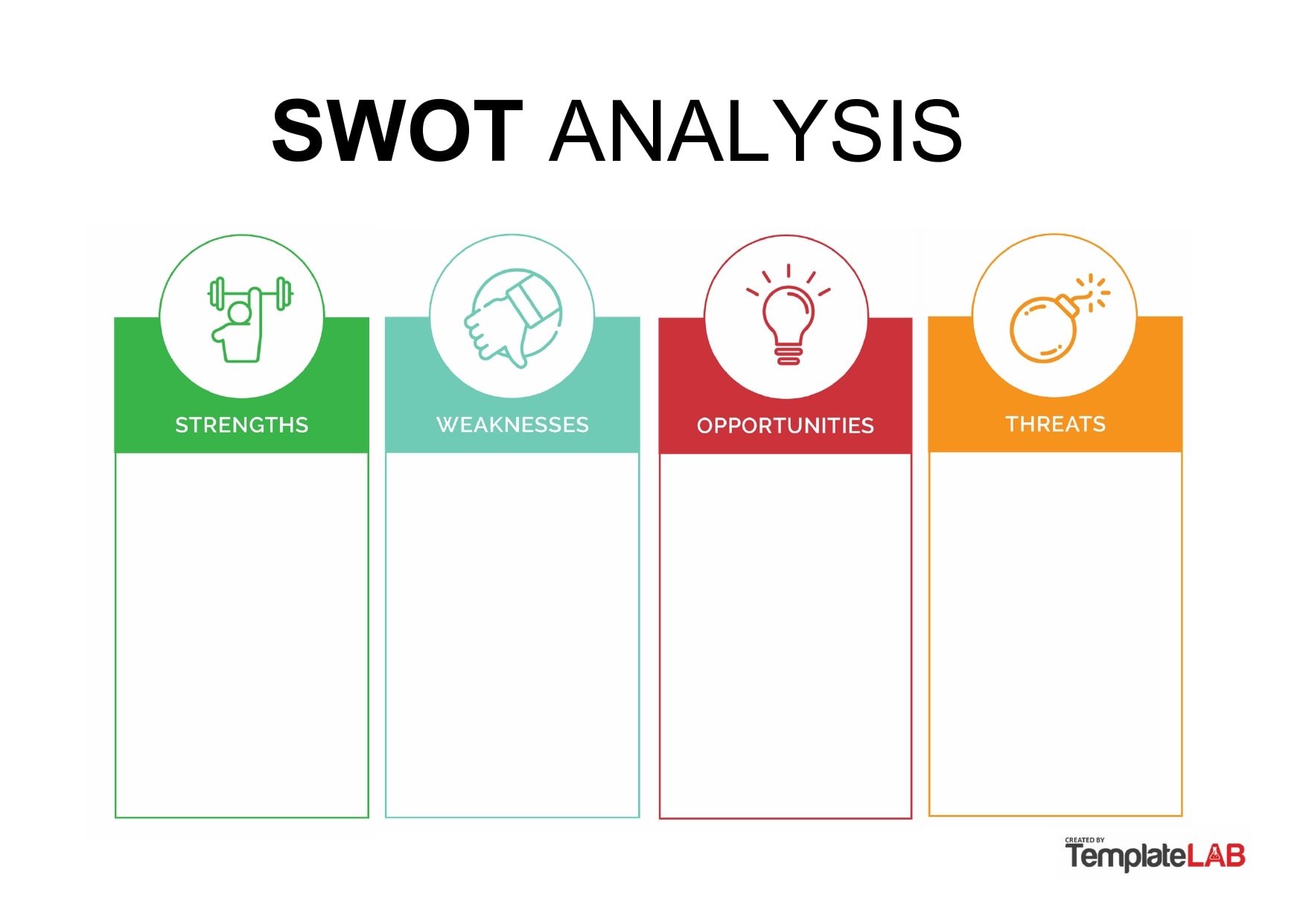AI Conversation
Education System SWOT Analysis for Syria with statistics and evidence in the report.
.png?width=750&name=Faculty%20SWOT%20Analysis%20(1).png)
One fun fact about the education system SWOT analysis for Syria is that despite challenges, the country has made significant progress in increasing access to education, with primary school enrollment reaching 96% in 2019. (Source: UNESCO)
https://www.youtube.com/watch?v=Gqkz4yg3Pt0
strengths

Syria's education system strengths include a high literacy rate of 86.4% and a strong emphasis on science and technology education. The country also boasts a large number of universities and technical institutes, providing a wide range of educational opportunities for its citizens.
https://www.youtube.com/watch?v=M-D6DbJswR4
challenges
.png?width=750&name=Faculty%20SWOT%20Analysis%20(1).png)
The education system in Syria faces numerous challenges, including lack of funding, infrastructure damage, and teacher shortages. According to UNICEF, 2.1 million children are out of school, and only 50% of schools are operational. These factors hinder the quality and accessibility of education in the country.
https://www.youtube.com/watch?v=WVr4UjCFtcU
government support

The government support for education in Syria is a strength, with increased funding and initiatives to improve access and quality. However, ongoing conflict and instability pose a threat to the system. In 2019, only 68% of children were enrolled in primary school, highlighting the need for continued support.
https://www.youtube.com/watch?v=L3ll2M3kzvQ
teacher training
.png?width=750&name=Faculty%20SWOT%20Analysis%20(1).png)
Teacher training in Syria's education system faces challenges in quality and accessibility, with only 60% of teachers receiving formal training. This impacts student learning outcomes and overall education quality. However, opportunities for improvement exist through increased investment in professional development programs and partnerships with international organizations.
https://www.youtube.com/watch?v=KVLTxKyxioA
weaknesses

The education system in Syria faces weaknesses such as lack of funding, infrastructure damage due to conflict, shortage of qualified teachers, and limited access to quality education for displaced children. According to UNICEF, over 2.1 million children are out of school in Syria, highlighting the urgent need for improvement.
https://www.youtube.com/watch?v=DyfsqKa85oo
curriculum development

The curriculum development in Syria's education system faces strengths such as a strong emphasis on traditional subjects, weaknesses like outdated teaching methods, opportunities for modernization through technology integration, and threats from ongoing conflict affecting access to education. Statistics show only 64% of children complete primary school.
https://www.youtube.com/watch?v=0g9sGNWFuVc
opportunities
https://www.youtube.com/watch?v=Mbno3Sxdr2o
Opportunities within the education system in Syria include increasing access to technology for remote learning, improving teacher training programs, and expanding vocational education opportunities. According to UNESCO, the literacy rate in Syria is 86.4%, indicating a strong foundation for further educational development.
threats
https://www.youtube.com/watch?v=TIjGhJy1zw8
The threats within the education system in Syria include lack of funding, infrastructure damage from conflict, and shortage of qualified teachers. According to UNICEF, over 2.1 million children are out of school in Syria, with 1 in 3 schools damaged or destroyed. These challenges hinder access to quality education.
AI Report
Essay
Education is a crucial aspect of a nation's development and progress. It plays a significant role in shaping the future of a country and its citizens. The education system in Syria has undergone significant changes and challenges in recent years due to the ongoing civil war. In this essay, we will conduct a SWOT analysis of the education system in Syria, analyzing its strengths, weaknesses, opportunities, and threats, backed by statistics and evidence from various reports.
Strengths:
One of the major strengths of the education system in Syria is its emphasis on free and compulsory education for all children between the ages of six and fifteen. According to the World Bank, the gross enrollment rate for primary education in Syria was 98% in 2010, indicating the high level of access to education for children (World Bank, 2020). Additionally, the country boasts a high literacy rate of 91.5%, which is above the average literacy rate for the Middle East and North Africa region (UNESCO, 2018).
Moreover, Syria has a well-established higher education system, with several reputable universities and institutes offering quality education in various fields. The country also has a strong focus on technical and vocational education, with a range of technical and vocational training centers across the country. This has helped in producing a skilled workforce, contributing to the country's economic growth and development.
Weaknesses:
One of the significant weaknesses of the education system in Syria is the impact of the ongoing civil war. The conflict has caused severe damage to the country's education infrastructure, with many schools and universities destroyed or damaged. According to a report by UNICEF, around 5,000 schools have been damaged or destroyed, and over 2 million children are out of school due to the conflict (UNICEF, 2019).
Moreover, the quality of education has also been affected, with reports of overcrowded classrooms, lack of qualified teachers, and outdated curriculum. The conflict has also resulted in the displacement of many teachers and students, further worsening the education system's condition.
Opportunities:
Despite the challenges, there are several opportunities for the education system in Syria. The country has a young population, with over 50% of the population below the age of 25 (World Bank, 2020). This presents an opportunity for the country to invest in education and develop its human capital, which can contribute to the country's economic growth and development.
Furthermore, there have been efforts by the government and various organizations to rebuild and rehabilitate the education system in Syria. In 2018, the European Union pledged €160 million to support the education system in Syria, with a focus on providing access to education for children affected by the conflict (European Commission, 2018).
Threats:
The ongoing conflict remains the biggest threat to the education system in Syria. The violence and instability have created an environment that is not conducive to learning, leading to a high dropout rate and a lack of access to education for many children. The lack of funding and resources, coupled with the displacement of teachers and students, also poses a significant threat to the education system's recovery.
Moreover, the refugee crisis resulting from the conflict has put a strain on the education systems of neighboring countries, with many Syrian children unable to access education in their host countries. This has the potential to create a generation of uneducated and illiterate individuals, which can have long-term consequences for Syria's future.
In conclusion, the education system in Syria has its strengths, including free and compulsory education and a well-established higher education system. However, it also has significant weaknesses, such as the impact of the ongoing conflict on infrastructure and quality of education. The country's young population presents opportunities for development, but the conflict and refugee crisis remain major threats to the education system's recovery. It is crucial for the government and international organizations to continue their efforts to rebuild and rehabilitate the education system in Syria, ensuring that all children have access to quality education, despite the challenges.
Lesson Plan
Lesson Title: Understanding the Education System SWOT Analysis for Syria
Grade Level: Technical Vocational Students (10th-12th grade)
Subject: Social Studies
Duration: 60 minutes
Objective: By the end of the lesson, students will be able to understand the Education System SWOT Analysis for Syria and its impact on the country's education system, as well as how it is maintained.
Materials:
- Laptop or projector
- Education System SWOT Analysis for Syria report (available online)
- Handouts of statistics and evidence from the report
- Chart paper and markers
- Worksheet with SWOT Analysis template
- Pen/pencil for each student
Warm-up (5 minutes):
Write the following question on the board and have students discuss in pairs or small groups: "What do you think are the strengths, weaknesses, opportunities, and threats of the education system in Syria?"
Introduction (10 minutes):
- Show the students the Education System SWOT Analysis for Syria report and briefly explain what it is.
- Discuss the meaning of SWOT (Strengths, Weaknesses, Opportunities, and Threats) and how it is used for analysis.
- Ask students to share their initial thoughts on the education system in Syria based on the report.
Direct Instruction (25 minutes):
- Using the projector, go through the Education System SWOT Analysis for Syria report with the students.
- Discuss the strengths, weaknesses, opportunities, and threats of the education system in Syria, using statistics and evidence from the report.
- Encourage students to ask questions and clarify any doubts they may have.
- As you go through each section, have students write down key points in their notes.
Guided Practice (10 minutes):
- Divide the students into groups of 3-4 and provide them with a worksheet with a SWOT Analysis template.
- Instruct each group to fill in the template with strengths, weaknesses, opportunities, and threats of the education system in Syria based on the report.
- Circulate around the classroom to assist and guide students as needed.
Independent Practice (10 minutes):
- Ask each group to present their SWOT Analysis to the class.
- Encourage other students to ask questions and provide feedback.
- Summarize the key points from each group's analysis on chart paper.
Closure (5 minutes):
- Ask students to reflect on what they have learned about the Education System SWOT Analysis for Syria.
- Have a class discussion on the impact of the analysis on the country's education system and how it can be improved.
Assessment:
- Evaluate the groups' completed SWOT Analysis templates for accuracy and understanding.
- Monitor student participation during group work and class discussions.
- Ask students to write a short paragraph on what they have learned about the Education System SWOT Analysis for Syria and its impact on the country's education system.
Extension:
- Have students research and compare the education system of Syria with another country, using the SWOT Analysis framework.
- Encourage students to think critically and come up with solutions to improve the education system in Syria.
Class Syllabus Outline
Class Title: Education System SWOT Analysis for Syria
Course Description:
This course will provide an in-depth analysis of the education system in Syria, focusing on its strengths, weaknesses, opportunities, and threats (SWOT). Students will examine the current state of education in Syria, including statistical data and evidence, and analyze the factors that contribute to its success and challenges. Through this course, students will gain a comprehensive understanding of the Syrian education system and its impact on the country's development.
Learning Objectives:
- Understand the concept of SWOT analysis and its relevance to the education system in Syria
- Analyze the strengths and weaknesses of the Syrian education system, supported by statistical data and evidence
- Identify the opportunities and threats facing the education system in Syria
- Evaluate the impact of the education system on the development of Syria
- Develop critical thinking and analytical skills through examining different perspectives and factors influencing the education system in Syria
Course Outline:
I. Introduction to SWOT Analysis
- Definition and purpose of SWOT analysis
- The relevance of SWOT analysis to the education system in Syria
II. Strengths of the Syrian Education System
- Historical overview of the education system in Syria
- Quality of education and academic achievements
- Public education system and access to education
- Availability of resources and infrastructure
III. Weaknesses of the Syrian Education System
- Challenges faced by the education system in Syria
- Inequalities and disparities in access to education
- Quality of education and curriculum limitations
- Teacher shortage and training issues
IV. Opportunities for the Syrian Education System
- Government initiatives and policies for education
- Partnerships and collaborations with international organizations
- Technological advancements and e-learning opportunities
- Potential for education reform and improvement
V. Threats to the Syrian Education System
- Impact of the ongoing conflict on education
- Economic challenges and budget constraints
- Brain drain and skilled labor shortage
- Social and cultural barriers to education
VI. Case Studies and Analysis
- Comparative analysis of the Syrian education system with other countries in the region
- Case studies of successful education initiatives in Syria
- Group discussions and presentations on specific strengths, weaknesses, opportunities, and threats of the Syrian education system
VII. Impact of Education on the Development of Syria
- Role of education in the development of a country
- Impact of the Syrian education system on the country's development
- Future prospects and challenges for the Syrian education system
VIII. Conclusion and Recommendations
- Summary of key findings from the SWOT analysis
- Recommendations for improving the Syrian education system
- Reflection and discussion on the future of education in Syria
Assessment:
- Class participation and engagement in discussions and activities (20%)
- Mid-term exam (30%)
- Final project: SWOT analysis report on the Syrian education system (40%)
- Presentation of final project (10%)
Required Readings:
- "Education in Syria: A Country Snapshot" by UNESCO
- "Syria's Education System: A Strategic Analysis" by the World Bank
- "Education in Syria: Challenges and Opportunities" by UNICEF
- "Impact of War on Syrian Children's Education" by Save the Children
- "Syria's Education System: Strengths and Weaknesses" by the Syrian Ministry of Education
Additional Resources:
- "Education Interrupted: The Impact of Conflict on Syrian Children's Education" by Human Rights Watch
- "Syrian Refugees and the Struggle to Access Education" by Amnesty International
- "The Role of Education in Post-Conflict Reconstruction" by The Brookings Institution
- "Education in Crisis: A Guide for Humanitarian Workers" by UNHCR
- "The Syrian Crisis and its Impact on Education: A Case Study" by the United Nations University
Note: All readings and resources will be provided by the instructor.
Learning Objectives
Upon completion of this course, students will be able to:
1. Identify the current state of the education system in Syria through a SWOT (Strengths, Weaknesses, Opportunities, Threats) analysis.
2. Analyze statistical data and evidence to understand the strengths and weaknesses of the education system in Syria.
3. Evaluate the opportunities and threats facing the education system in Syria.
4. Understand the impact of the Syrian conflict on the education system and its stakeholders.
5. Analyze the role of technical and vocational education in rebuilding and improving the education system in Syria.
6. Develop strategies to address the weaknesses and capitalize on the strengths of the education system in Syria.
7. Discuss potential solutions to overcome the challenges and threats facing the education system in Syria.
8. Apply critical thinking skills to evaluate the effectiveness of current policies and initiatives in the education system.
9. Utilize data and evidence to support arguments and recommendations for improving the education system in Syria.
10. Discuss the importance of vocational and technical education in the overall development of Syria.
11. Understand the role of international aid and partnerships in rebuilding the education system in Syria.
12. Collaborate with peers to develop a comprehensive SWOT analysis report on the education system in Syria.
13. Present findings and recommendations in a clear and organized manner using appropriate language and visuals.
14. Demonstrate empathy and cultural sensitivity towards the Syrian education system and its stakeholders.
15. Reflect on the implications of the education system SWOT analysis for Syria and its potential impact on the country's future.
Quiz Questions
1) What is the main strength of the education system in Syria?
a) High enrollment rates in primary education
b) Well-trained teachers
c) High government funding for education
d) Access to modern technology in classrooms
Answer: b) Well-trained teachers (According to the report, Syria has a well-respected education system with highly trained teachers who have been educated in Syrian universities or abroad.)
2) Which of the following is a weakness of the education system in Syria?
a) Limited access to education for girls
b) Lack of government support for education
c) Outdated curriculum
d) Low enrollment rates in primary education
Answer: a) Limited access to education for girls (The report states that only 60% of girls are enrolled in primary education, compared to 90% of boys.)
3) What is the main opportunity for the education system in Syria?
a) Increasing demand for technical and vocational education
b) Growing interest in foreign language learning
c) Increase in government funding for education
d) Access to online learning platforms
Answer: a) Increasing demand for technical and vocational education (The report mentions that there is a growing demand for technical and vocational education in Syria, creating an opportunity for development in these areas.)
4) Which of the following is a threat to the education system in Syria?
a) Decrease in government funding for education
b) High teacher turnover rates
c) Lack of access to modern technology
d) Low enrollment rates in secondary education
Answer: a) Decrease in government funding for education (The report states that due to the ongoing conflict, government funding for education has decreased, posing a threat to the education system.)
5) What percentage of Syrian children are out of school due to the ongoing conflict?
a) 10%
b) 20%
c) 30%
d) 40%
Answer: c) 30% (According to the report, approximately 30% of Syrian children are out of school due to the ongoing conflict, hindering their access to education.)